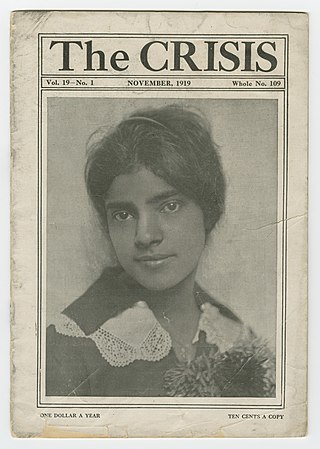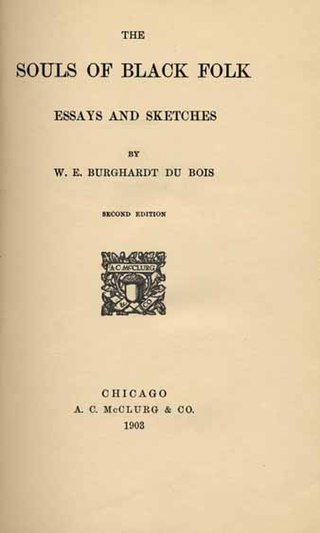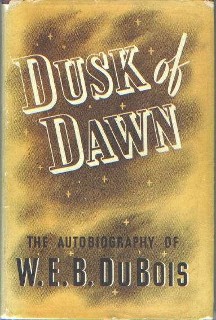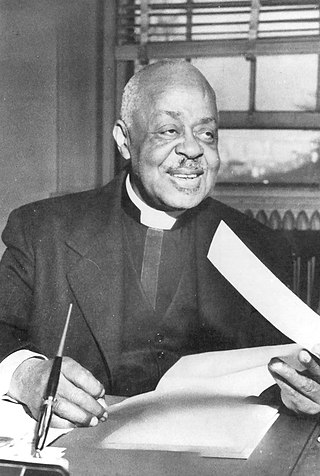
William Edward Burghardt Du Bois was an American sociologist, socialist, historian, and Pan-Africanist civil rights activist. Born in Great Barrington, Massachusetts, Du Bois grew up in a relatively tolerant and integrated community. After completing graduate work at the Friedrich Wilhelm University and Harvard University, where he was the first African American to earn a doctorate, he became a professor of history, sociology, and economics at Atlanta University. Du Bois was one of the founders of the National Association for the Advancement of Colored People (NAACP) in 1909.
William Julius Wilson is an American sociologist, a professor at Harvard University, and an author of works on urban sociology, race, and class issues. Laureate of the National Medal of Science, he served as the 80th President of the American Sociological Association, was a member of numerous national boards and commissions. He identified the importance of neighborhood effects and demonstrated how limited employment opportunities and weakened institutional resources exacerbated poverty within American inner-city neighborhoods.

The Crisis is the official magazine of the National Association for the Advancement of Colored People (NAACP). It was founded in 1910 by W. E. B. Du Bois (editor), Oswald Garrison Villard, J. Max Barber, Charles Edward Russell, Kelly Miller, William Stanley Braithwaite, and Mary Dunlop Maclean. The Crisis has been in continuous print since 1910, and it is the oldest Black-oriented magazine in the world. Today, The Crisis is "a quarterly journal of civil rights, history, politics and culture and seeks to educate and challenge its readers about issues that continue to plague African Americans and other communities of color."

The Souls of Black Folk: Essays and Sketches is a 1903 work of American literature by W. E. B. Du Bois. It is a seminal work in the history of sociology and a cornerstone of African-American literature.
The talented tenth is a term that designated a leadership class of African Americans in the early 20th century. Although the term was created by white Northern philanthropists, it is primarily associated with W. E. B. Du Bois, who used it as title of an influential essay, published in 1903. It appeared in The Negro Problem, a collection of essays written by leading African Americans and assembled by Booker T. Washington.

The 1906 Atlanta Race Riot, also known as the 1906 Atlanta Race Massacre, was an episode of mass racial violence against African Americans in the United States in September 1906. Violent attacks by armed mobs of White Americans against African Americans in Atlanta, Georgia, began after newspapers, on the evening of September 22, 1906, published several unsubstantiated and luridly detailed reports of the alleged rapes of 4 local women by black men. The violence lasted through September 24, 1906. The events were reported by newspapers around the world, including the French Le Petit Journal which described the "lynchings in the USA" and the "massacre of Negroes in Atlanta," the Scottish Aberdeen Press & Journal under the headline "Race Riots in Georgia," and the London Evening Standard under the headlines "Anti-Negro Riots" and "Outrages in Georgia." The final death toll of the conflict is unknown and disputed, but officially at least 25 African Americans and two whites died. Unofficial reports ranged from 10–100 black Americans killed during the massacre. According to the Atlanta History Center, some black Americans were hanged from lampposts; others were shot, beaten or stabbed to death. They were pulled from street cars and attacked on the street; white mobs invaded black neighborhoods, destroying homes and businesses.

John Gibbs St. Clair Drake was an African-American sociologist and anthropologist whose scholarship and activism led him to document much of the social turmoil of the 1960s, establish some of the first Black Studies programs in American universities, and contribute to the independence movement in Ghana. Drake often wrote about challenges and achievements in race relations as a result of his extensive research.
The term color line was originally used as a reference to the racial segregation that existed in the United States after the abolition of slavery. An article by Frederick Douglass that was titled "The Color Line" was published in the North American Review in 1881. The phrase gained fame after W. E. B. Du Bois' repeated use of it in his 1903 book The Souls of Black Folk.

Dusk of Dawn: An Essay Toward an Autobiography of a Race Concept is a 1940 autobiographical text by W. E. B. Du Bois that examines his life and family history in the context of contemporaneous developments in race relations.
The Study of the Negro Problems, from The Annals of the American Academy of Political and Social Science, is an essay written by professor, sociologist, historian and activist W. E. B. Du Bois. It both challenges the question he poses in his The Souls of Black Folk (1903) of “How does it feel to be a problem?” and is reminiscent of the popular mindset of white people toward people of color at the time.

The sociology of race and ethnic relations is the study of social, political, and economic relations between races and ethnicities at all levels of society. This area encompasses the study of systemic racism, like residential segregation and other complex social processes between different racial and ethnic groups.

The Exhibit of American Negroes was a sociological display within the Palace of Social Economy at the 1900 World's Fair in Paris. The exhibit was a joint effort between Daniel Murray, the Assistant Librarian of Congress, Thomas J. Calloway, a lawyer and the primary organizer of the exhibit, and W. E. B. Du Bois. The goal of the exhibition was to demonstrate progress and commemorate the lives of African Americans at the turn of the century.
The Atlanta Conference of Negro Problems was an annual conference held at Atlanta University, organized by W. E. B. Du Bois, and held every year from 1896 to 1914.

Augustus Granville Dill was born in Portsmouth, Ohio. His parents were John Dill and Elizabeth Jackson. He received his B.A. from Atlanta University in 1906, received a second B.A. from Harvard in 1908, and received his M.A. in 1909 from Harvard.
The Atlanta Sociological Laboratory was founded in 1895-96 at Clark Atlanta University in Atlanta, Georgia.

This article documents the history of African-Americans or Black Philadelphians in the city of Philadelphia, Pennsylvania.

Richard Robert Wright Jr. was an American sociologist, social worker, and minister. In 1911, Wright became the first African American to earn a doctorate in sociology from an organized graduate school when he received his PhD from the University of Pennsylvania.

Gordon Blaine Hancock was a professor at Virginia Union University and a leading spokesman for African American equality in the generation before the civil rights movement.
Thomas Jesse Jones (1873-1950) was a Welsh-American sociologist and educational administrator. He was Educational Director of the Phelps Stokes Fund from 1917 to 1946. W. E. B. DuBois accused Jones of systematically working to replace Black leaders with white and labelled Jones "that evil genius of the Negro race".
William Wilson Elwang was a Presbyterian minister, teacher, and author. He served as historian of the Sigma Alpha Epsilon fraternity from 1887.













